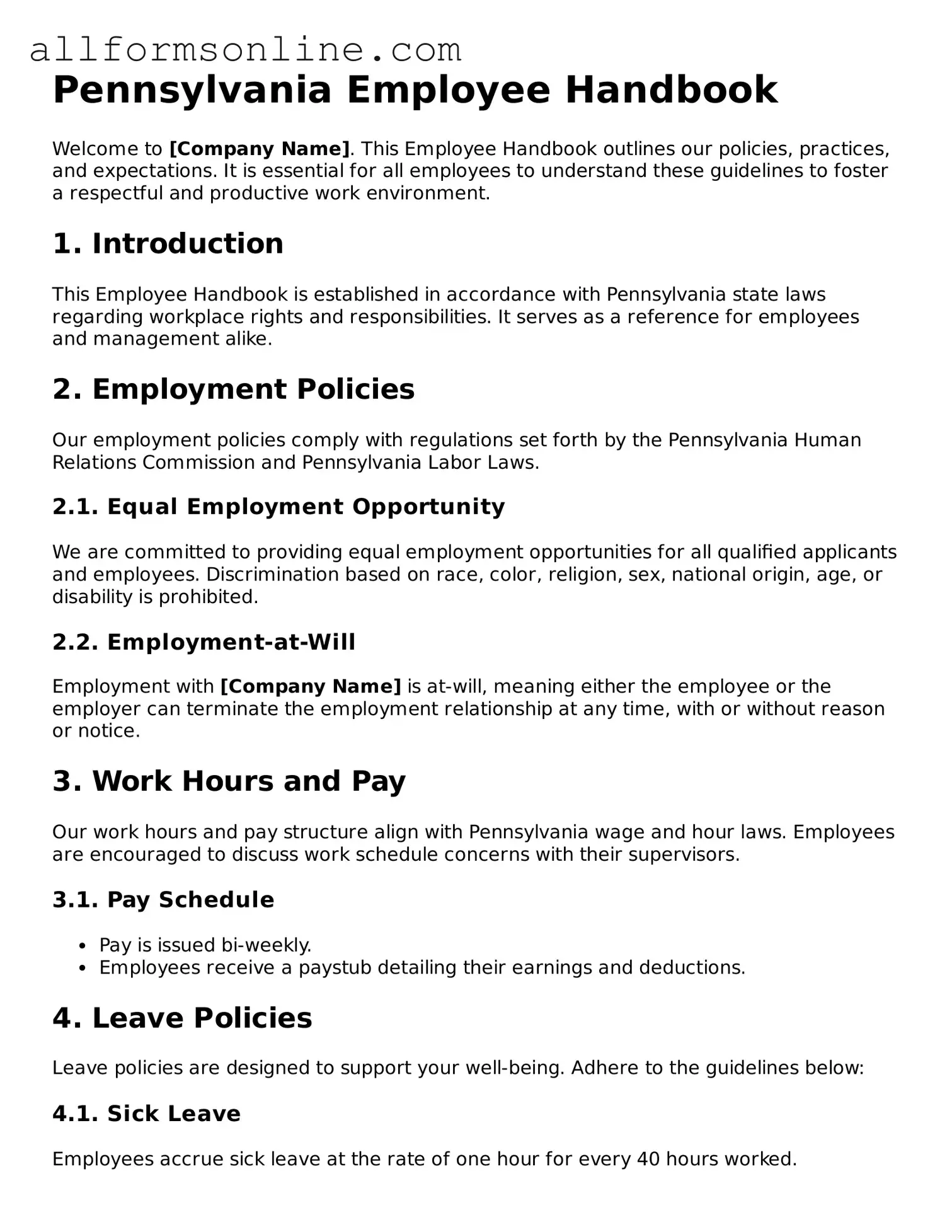What is the Pennsylvania Employee Handbook form?
The Pennsylvania Employee Handbook form is a document that outlines the policies, procedures, and expectations of an employer regarding their employees. It serves as a guide to help employees understand their rights and responsibilities within the workplace. This handbook can cover various topics such as workplace conduct, benefits, and disciplinary procedures.
Why is an Employee Handbook important?
An Employee Handbook is crucial for establishing clear communication between the employer and employees. It helps to set the tone for the workplace culture and ensures that all employees are aware of the company's policies. This can reduce misunderstandings and disputes, leading to a more harmonious work environment.
Who should receive a copy of the Employee Handbook?
Every employee should receive a copy of the Employee Handbook upon hiring. This ensures that all staff members are informed of the company's policies from the start. Employers may also choose to provide updated versions to current employees whenever significant changes occur.
How often should the Employee Handbook be updated?
The Employee Handbook should be reviewed and updated regularly, at least once a year or whenever there are changes in employment law or company policies. Keeping the handbook current helps ensure that all employees have access to the most accurate information regarding their rights and responsibilities.
Can an Employee Handbook be legally binding?
While an Employee Handbook is not typically considered a legally binding contract, certain policies may create implied obligations for the employer. For instance, if the handbook outlines specific disciplinary procedures, failing to follow those procedures could lead to legal complications. It's essential to be clear about the handbook's intent and to include disclaimers where necessary.
What topics should be included in the Employee Handbook?
Common topics to include in an Employee Handbook are workplace policies, employee benefits, attendance and leave policies, anti-discrimination policies, and procedures for reporting grievances. It may also address safety procedures, employee conduct, and disciplinary actions. Tailoring the content to fit the specific needs of the organization is beneficial.
How can employees provide feedback on the Employee Handbook?
Employees should be encouraged to provide feedback on the Employee Handbook. This can be done through surveys, suggestion boxes, or during staff meetings. Open communication allows for improvements and ensures that the handbook reflects the needs and concerns of the workforce.
What should I do if I have questions about the Employee Handbook?
If you have questions about the Employee Handbook, it's best to speak with your supervisor or the Human Resources department. They can provide clarification on specific policies and help you understand how they apply to your situation. Don't hesitate to ask for guidance; understanding your rights is important.
Is there a specific format for the Employee Handbook in Pennsylvania?
There is no mandated format for the Employee Handbook in Pennsylvania. However, it should be clear, concise, and easy to read. Employers can choose to create a printed version, a digital document, or an online resource. The key is to ensure that the information is accessible to all employees.
What should I do if I disagree with a policy in the Employee Handbook?
If you disagree with a policy in the Employee Handbook, it is advisable to discuss your concerns with your supervisor or Human Resources. They can provide insight into the rationale behind the policy and may be open to feedback. Engaging in a constructive dialogue can lead to a better understanding and potential revisions.
